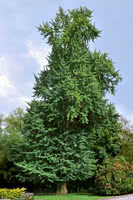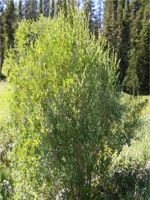Mon-Fri 9am - 5pm Mountain time
Ginkgo Biloba vs Bebbs Willow
Ginkgo biloba
Salix bebbiana
NOT AVAILABLE THIS SEASON - MIGHT RETURN
The Ginkgo Biloba is regarded as one of the most distinctive and beautiful of all the deciduous trees, and has remained genetically unchanged for millions of years. Its beautifully fan-shaped leaves develop a clear yellow colour in fall. Graceful and attractive year-round, Ginkgo is the perfect conversation starter in your yard.
This large shrub is native to all of Canada and most of the United States. Its leaves are green on the top and grey on the bottom, and it produces catkin based flowers and non-edible fruit which appears very similar to a group of pine needles.
Bebb's Willow is foraged for by many species including elk, hares, beavers and various birds. It is commonly used to prevent erosion and protect aquatic environments due to its preference for shady, moist environments.
Ginkgo Biloba Quick Facts
Bebbs Willow Quick Facts
Toxicity: Uncooked nuts in large quantities

